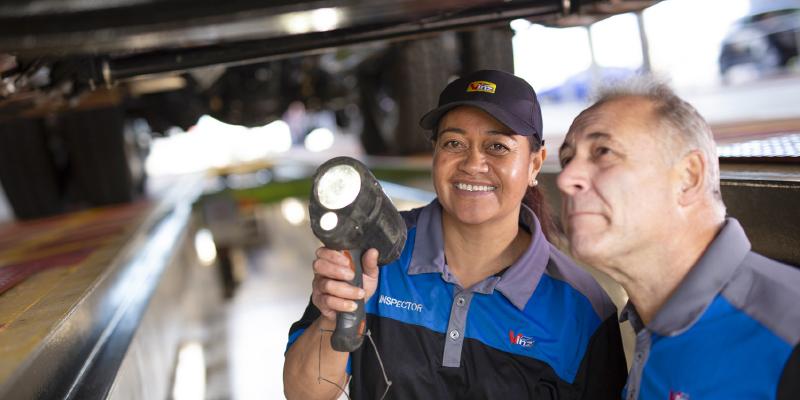All workplaces are becoming more diverse as New Zealand’s population mix changes radically. This creates both great opportunities but also some unique challenges in terms of managing workers that in many cases have different expectations around employee and management behaviour and health and safety and culture. In the 2018 census, 27 percent of New Zealanders were not born in New Zealand and there were over 200 different ethnicities in New Zealand.
The SuperDiversity Institute recently completed a report supported by ACC on National culture and its impact on workplace health and safety. One of the key findings was that “Different ethnic groups in New Zealand have markedly different cultural values which affect their view of risk and their health and safety attitudes and behaviours.” It went on to say that these differences needed to be taken into account when developing tools and tactics for injury prevention. Many of these cultural differences also manifest in terms of other work aspects.
Some of the differences may include language skills, previous experience with health and safety in another country (where rules may be less stringent) and how they culturally interact with authority/management. Especially with some Asian cultures, they are much less likely to report incidents or concerns as their cultures are less individualistic and more power distant as opposed to the “typical” Kiwi culture which is individualistic and low power distant.
One of the parties that was involved in consultation for the report was VINZ. They have a culturally diverse workforce, so we spoke with Sean Stevens, the VINZ acting CEO, about how they manage and celebrate this.
MEN: What is the make-up of the VINZ workforce – from a diversity/ethnicity perspective?
Sean: VINZ does not record information on ethnicity so I can only provide you with my view on this and it is highly dependent on location. In Auckland we have a high percentage of Fijian Indians, a large percentage of which are Muslim. This is managed by working with individuals and their workplaces to enable lunch breaks that can be tailored around prayer routines especially around fasting periods, etc. Our second biggest percentage is now South Africans and this covers the range of Afrikaans speakers, Zimbaweans and both European and indigenous backgrounds. NZ European is the larger percentage in the South Island, however we also have a number of South Africans, Malaysian Muslims and Fijians. Interestingly our percentage of Asian employees is quite low.
MEN: What specific issues have you found in terms of managing that diversity and any key actions you have taken?
Sean: The Muslim faith has certainly required some thinking, particularly when it comes to prayers, Ramadan and fasting. VINZ has a specific policy around diversity and equal opportunity and while there will always be situations that pop up, overall all our team get on extremely well no matter where they come from or who they are.
MEN: Have you in practice found a difference in the incidence of health and safety issues across different ethnicities?
Sean: In general, our issues relate more to areas than ethnicity, however there is certainly an element of older NZ Europeans that struggle with implementing health and safety in their workplace.
MEN: How much do you feel language has been a factor in this?
Sean: Language difficulties are most often encountered through our online training, as it is usually written rather than spoken. The understanding is not the problem, but the expression can sometime be.
MEN: How much is due to different understandings of health and safety culture for those from different countries?
Sean: Certainly, there are differing practices across the various ethnic backgrounds, however NZ Europeans have a good understanding, but sometimes fail to implement or see the need. Employees from other ethnic backgrounds need more time to understand but are probably better at implementing or seeing the need.
MEN: Some cultures have tended to defer and not challenge authority – do you feel this makes health and safety management harder due to lack of feedback around potential hazards and issues?
Sean: While this is true, I think this depends on who is managing the employee and the health and safety side of the business. VINZ has dedicated health and safety champions in each branch who are NOT managers. This helps the team gel better and can get better outcomes that are not directed by management.
MEN: Do you have any specific initiatives addressing health and safety for diverse employees?
Sean: None that are specific, but we have good policies in place and regular reporting and communication on health and safety.
MEN: Any general comments on managing an ethnically diverse workforce?
Sean: In general, this begins with the hire and induction process and if carried out correctly there should be no major differences. Of course, it may take a little longer, particularly if there are language barriers, but language is a key skill for our staff as they usually need to pass an NZTA test.
One advantage of a diverse workforce is that it can help you attract a diverse clientele who may like the evidence of diversity. One Auckland workshop we know literally opened a separate operation next door to cater for Chinese clients, with an appropriate name and diverse front office staff and technicians. Especially in Auckland, there are a variety of media resources to reach ethnically diverse communities to expand your customer base.
Another diversity issue that may be overlooked is that a significant part of your client base are women, who are obviously under-represented in many automotive businesses. A ttracting female technicians or service advisers may help make these clients feel more at home and less intimidated by the process of getting their vehicle serviced or repaired. You also shouldn’t assume that the female client knows nothing about vehicles or servicing. More and more now have strong technical backgrounds (for instance around 27 percent of engineering students are now female).






